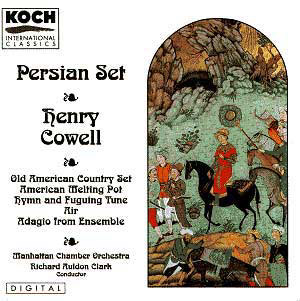|
|
Search MusicWeb Here |
|
 |
||
|
Founder:
Len Mullenger (1942-2025) Editor
in Chief:John Quinn
|
|
|
Search MusicWeb Here |
|
 |
||
|
Founder:
Len Mullenger (1942-2025) Editor
in Chief:John Quinn
|
 |
Henry COWELL (1897-1965) |
|
Crotchet AmazonUK AmazonUS |
|
Henry Cowell is an example of a composer who was many things to many people, from avant-garde experimentalist to folk/traditional music adept. This disc is dominated by, though not entirely, the latter aspect of his musical personality. The title piece of the disc, though not a very accurate reflection of the disc as a whole, is the Persian Set. It dates from just after a three month sojourn in Iran in the 1950s and incorporates elements of that country's musical tradition. It is, to these ears, a fairly successful cross-fertilisation and, in many ways, ahead of its time. That said, it is not my favourite piece on the disc - there are several far stronger and far more memorable works. The Hymn and Fuguing Tune is one of a set of eighteen, written between 1944 and 1964, inspired by the great New England "shape-note" hymn composer William Billings. This is the second, for string orchestra (another, for oboe and strings, appears on a classic Argo ASMF/Marriner disc of Ives Third Symphony, Barber's Adagio and Copland's Quiet City), and is typical in that it provides a more gentle derivation of Billings than, say, William Schuman's otherwise excellent New England Triptych. Listeners may even be reminded of the string works of Finzi at times (e.g. Prelude). |
|
Return to Index |